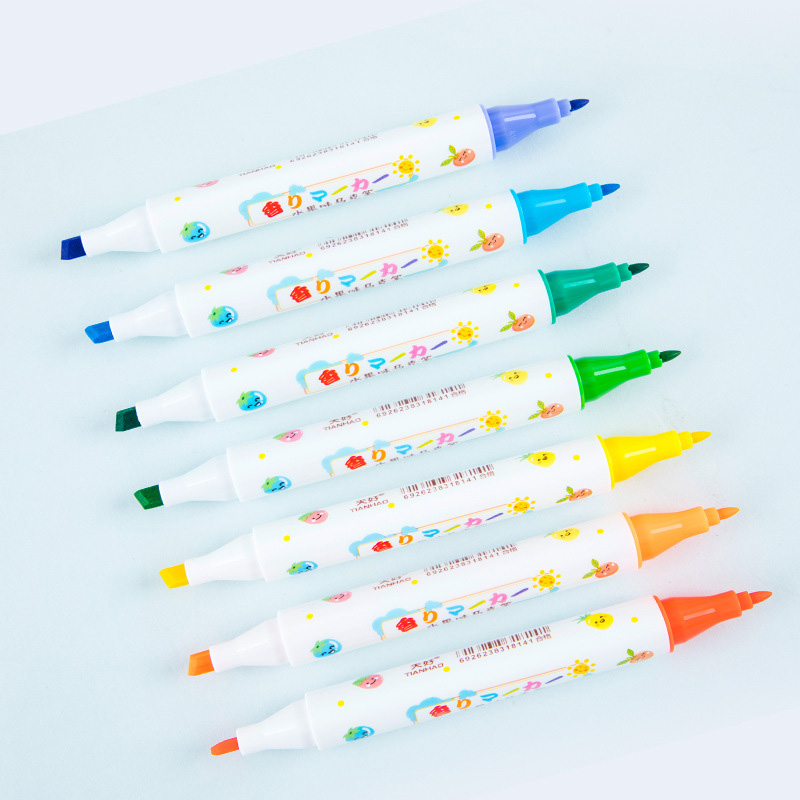In the ever-evolving world of art supplies, one product has made a significant splash among hobbyists and professional artists alike: the watercolor pen. Combining the fluidity of traditional watercolors with the convenience of a pen, watercolor pens are redefining how artists create, share, and explore their craft.
As modern artists seek tools that offer both precision and freedom, watercolor pens have emerged as a go-to choice for sketching on the go, practicing techniques, or developing detailed compositions—all without the mess of traditional paints and palettes.
A Modern Take on a Classic Medium
Watercolor painting has long been admired for its softness, luminosity, and expressiveness. But working with brushes, paints, and water often requires a controlled setting, making the process less accessible for casual or mobile use. Watercolor pens solve this problem by packaging water-soluble pigment in a marker-style pen, offering both ease of use and spontaneity.
These pens allow artists to draw, blend, and paint using a single tool. are designed with brush-style tips that mimic the flexibility of traditional bristles, enabling a range of strokes from fine lines to broad washes. Some pens even come with water brush pens—refillable brushes filled with water—that can be used to spread and dilute the ink after it's applied to the paper.
This versatility makes watercolor pens ideal for sketchbooks, travel journaling, urban sketching, calligraphy, and mixed-media projects.

Expanding Popularity Among Hobbyists and Professionals
Watercolor pens are gaining a foothold not only with casual users but also among professional artists, illustrators, and designers. Their ability to combine ink control with painterly effects makes them attractive to those who want a balance between structure and fluidity.
For illustrators, watercolor pens provide strong color payoff and quick drying times, which are ideal for layering and fine detail. Fashion designers and interior decorators use them to create color-rich concept sketches and storyboards. Meanwhile, art therapists and workshop leaders have adopted watercolor pens as accessible, low-stress tools for creative self-expression.
"The appeal lies in their immediacy," says Liana Torres, an art educator and studio owner. "Students can get to the fun part—blending and creating—without spending time setting up materials. It’s paint at your fingertips."
A Tool for Art-on-the-Go
One of the biggest advantages of watercolor pens is portability. Artists no longer need to carry tubes of paint, palettes, brushes, and jars of water to enjoy watercoloring on location. A compact set of watercolor pens, a sketchbook, and a water brush are all it takes to set up a full painting session at a park, café, or during travel.
This convenience has made them particularly popular with urban sketchers and plein air artists. In fact, watercolor pens have become a staple in travel art kits, enabling creators to quickly capture impressions of landscapes, city scenes, or even culinary illustrations in real time.
Innovation Driving the Market
Manufacturers have recognized the potential of watercolor pens and are responding with new features and improved ink technologies. Recent innovations include:
Dual-tip designs, offering a fine liner on one end and a flexible brush tip on the other
Lightfast and fade-resistant inks for archival quality work
Expanded color ranges, including metallics and skin tones
Eco-conscious packaging and refillable cartridges to reduce waste
High-end brands are also exploring collaborations with professional artists to develop signature pen sets, while budget-friendly options allow beginners to enter the world of watercolor art without significant investment.
Watercolor in the Classroom and Therapeutic Spaces
Watercolor pens are becoming increasingly popular in educational settings and therapeutic art programs. Teachers use them to introduce watercolor techniques without the need for messy cleanup. Their easy handling and immediate results make them suitable for children and beginners, fostering creativity from an early age.
In therapy, the soft visuals and blending effects of watercolor pens are used to help individuals express emotions, reduce anxiety, and explore visual storytelling. The tactile and fluid nature of the medium supports both structured activities and open-ended exploration, making it versatile in wellness and rehabilitation programs.
The DIY and Stationery Boom
Beyond the art world, watercolor pens are being embraced by DIY crafters, journalers, and planners. Their compatibility with high-quality paper planners and journaling systems has made them popular for creating decorative headings, personalized doodles, and color-coded layouts.